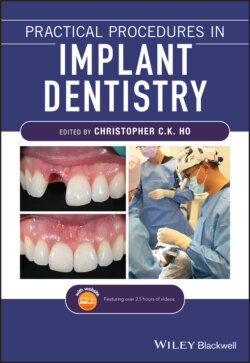Читать книгу Practical Procedures in Implant Dentistry - Группа авторов - Страница 36
3.2.1.2 Digital Templates
ОглавлениеMore recently, digital scanning has allowed us to ‘digitally’ wax up the tooth in the gap, design a template, and then either mill or 3D print this in acrylic. The design of the digital template should ensure that there is adequate support from hard tissues such as teeth adjacent to the gap, and the missing tooth is included in the template, so the doctor may drill through it to prepare space for the radiographic markers. Some doctors prefer to have ‘windows’ cut out of the acrylic to visually ensure seating of the template.
Although the digital workflow is constantly evolving, historically it began with this approach:
1 Intra‐oral scanning (or conventional impressions)
2 Construction of digital radiographic guides with radiopaque marker
3 CBCT (small FOV)
4 Conversion of radiographic guide to surgical guide based on the findings of the CBCT.
Modern digital workflows involve a streamlined approach which allows creation of the surgical guide being designed and milled from an initial intra‐oral scan and CBCT:
1 Intra‐oral scanning (or conventional impressions)
2 CBCT (small FOV)
3 Merging the intra‐oral scan with the CBCT, design and construction of a surgical guide.
